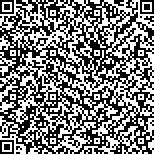| 摘要: |
| 国家自然科学基金作为国家支持基础
研究的主渠道,反映出我国学科的研究态势与
研究特点。建筑历史与理论学科作为建筑学领
域下的二级学科,其选题分析有助于了解本学
科的研究现状与基本格局。该论文选取近十
年(2010—2019年)受国家自然科学基金(N
SFC)资助的建筑历史与理论学科青年科学基
金项目和面上项目作为研究对象,运用自然语义
分析法提取标题结构中的关键词,从时空维度
和类型建构两个方面对其展开人工读审、分类
统计和图表绘制。在定量统计和定性归纳基础
上分析并阐释了选题的四个特点,即宏大叙事与
具体而微并重、集中性与离散性共现、持续性与
新颖性共生、包容性与交叉性并存。最后,研究
结合近十年《国家自然科学基金指南》的阶段变
化,揭示基金选题的变化规律与发展动态,并
籍此认知学科研究的核心要义,反思基金指南
的局限性。 |
| 关键词: 建筑历史与理论 基金选题 近十年 研究特点 发展态势 |
| DOI:10.13791/j.cnki.hsfwest.20230623 |
| 分类号: |
| 基金项目:重庆市社会科学规划项目(2023NDYB197) |
|
| Interpretation of the Research Characteristics of History and Theory of Architecture in Recent Ten Years: Analysis of Topic Selections Based on National Natural Science Foundation of China |
|
DAI Qiusi,LONG Minqi,WU Renqing
|
| Abstract: |
| As the main channel of national support for basic research, the National Natural
Science Foundation of China reflects the research trend and characteristics of disciplines in China.
Architectural History and Theory is a second-level discipline in the field of architecture. The analysis
of its topic selection is helpful to understand the current situation and basic pattern of this discipline.
The youth science fund projects and general projects of Architectural History and Theory discipline
funded by the National Natural Science Foundation of China (NSFC) in the past ten years (2010-2019)
have been selected as this research object. By using the natural semantic analysis method to extract
the keywords in the title structure, manual reading, classification statistics and chart drawing are
carried out from two aspects of space-time dimension and type construction.
Architecture is a material product formed in a specific era and a specific area. The study of
space-time dimension is the most fundamental component of architectural research. The research
objects in the project of the National Natural Science Foundation of China can be divided into five
time sections according to time: “ancient”, “Tang, Song, Liao”, “Ming and Qing Dynasties”, “modern”
and “modern and contemporary”. According to space, it can be divided into foreign country and
China including three spatial sections:“Southwest China, Northwest China and Hong Kong, Macao
and Taiwan regions of China”, “Central China, North China and Northeast China” and “East China
and South China”. The laws and characteristics of the research content are found in the information
network formed by the spatial-temporal correlation : firstly, there is a correspondence between
specific time and space; secondly, there is a vertical and horizontal comparison at the time and
space level; thirdly, the spatial and temporal correlation formed by the influence of historical events;
fourthly, the “restoring space-time method” focuses on the study of space-time; fifthly, pan-regional
concept defines space-time research.
The research objects in the project of National Natural Science Foundation of China correspond
to three core disciplines of human settlement environment, namely, architecture, urban and rural
planning and landscape architecture, forming three categories: architectural (in a narrow sense),
urban and landscape. According to whether the functional information can be accurately obtained
in the title, the research projects of architecture is divided into two parts: with or without definite
function, including 16 sub-categories and eleven types of research contents. The project results show
that the interdisciplinary cross-integration plays an important role as a common thinking method.
The research projects of urban category are divided into two parts: city (town) and settlement, which
mainly include eight sub-categories and eight types of research contents. There are few research
projects in the field of landscape, mainly including three subdivision types and five types of research
contents. The above three categories are independent and interrelated, forming a relatively rich and
complete type construction of the discipline.
Through the quantitative statistics and qualitative induction of the selected topics of the National Natural Science Foundation of China, the four characteristics of the topic selection were further analyzed and explained: both grand narrative
and concrete and subtle narrative, concentration and discreteness co-occurrence, continuity and novelty symbiosis, inclusiveness and cross-disciplinary
coexistence. The topic selection of the National Natural Science Foundation of China project not only reflects the trend and characteristics of the research
on Architectural History and Theory, but also has the representative of the development of the Architectural History and Theory, which can scientifically
present the macro picture of the development of this discipline: Firstly, the “basic” research continues, on the basis of “finding out the details”, exploring
new methods and opening up new fields; secondly, the discussion of “scientific” is deepened step by step, which is reflected in the focus and depth of the
topic; thirdly, the “cross-disciplinary” methods and results provide positive support. On the one hand, the research innovates through digital information
technology; on the other hand, the research methods break through the discipline boundary in order to cross and integrate disciplines; fourthly, the freedom
of “open” project application ensures that the funding is wide enough and the project topics are numerous and scattered.
The “National Natural Science Foundation Guide” has always adhered to the principles of “basic”, “scientific”, “cross and integrate disciplines” and
“open” and guided the applicants to apply for the funding of the National Natural Science Foundation. Applicants also use the “Guide” as an important basis
for applying for the funding of the National Natural Science Foundation. The changes in the guide are positively correlated with the discipline development
dynamics reflected in the fund topics of Architectural History and Theory. It is self-evident that the “guide” plays a guiding role in the macro perspective and
major policies, but it is difficult to closely combine the development dynamics to guide the scientific issues with time hot pots and outstanding value. If the
annual project analysis and diachronic combing can be carried out in real time, real-time information feedback can be realized, and mutual learning between
fund project analysis and future guide formulation can be realized, it will help the “guide” to play a more active role in the field of fund’s topic selection. |
| Key words: History and Theory of Architecture Fund Project Selected Topic Recent Ten Years Research Characteristics Development Trend |


